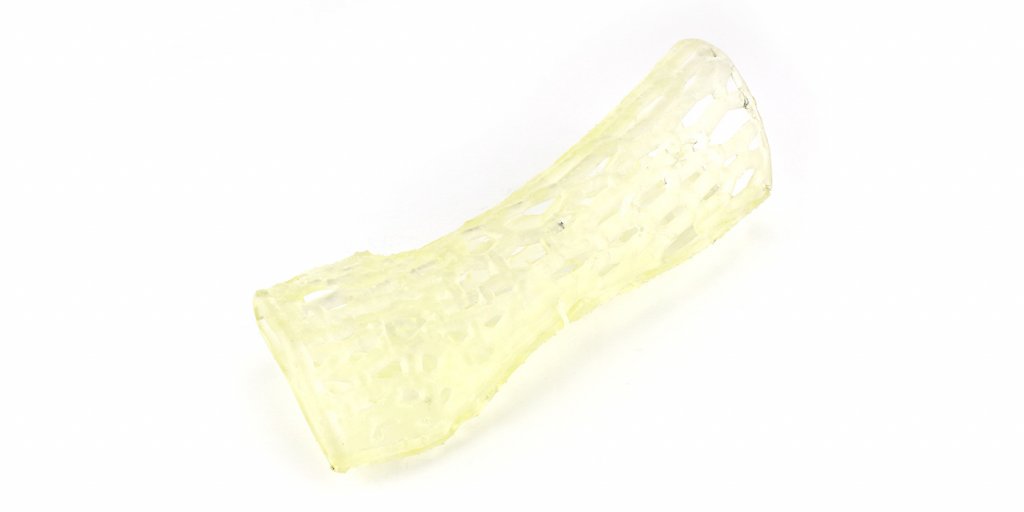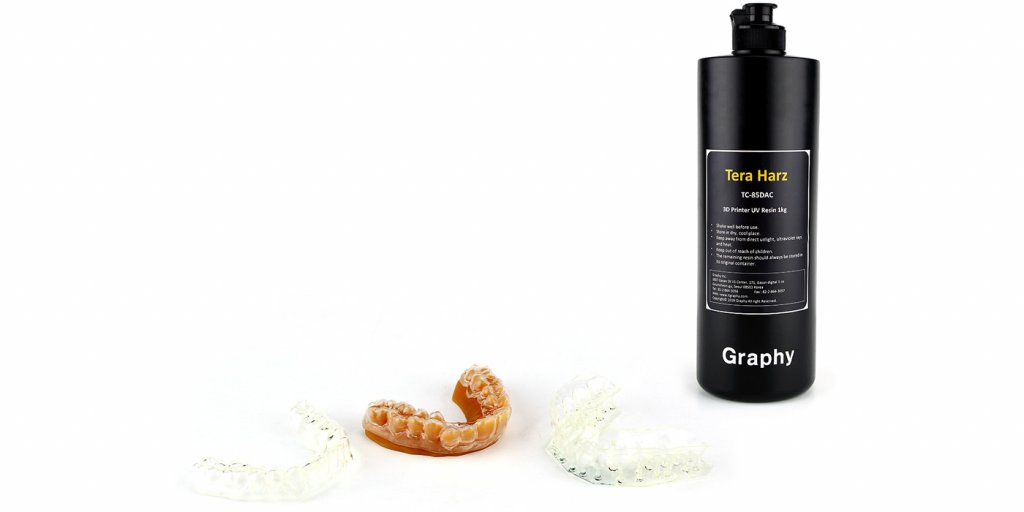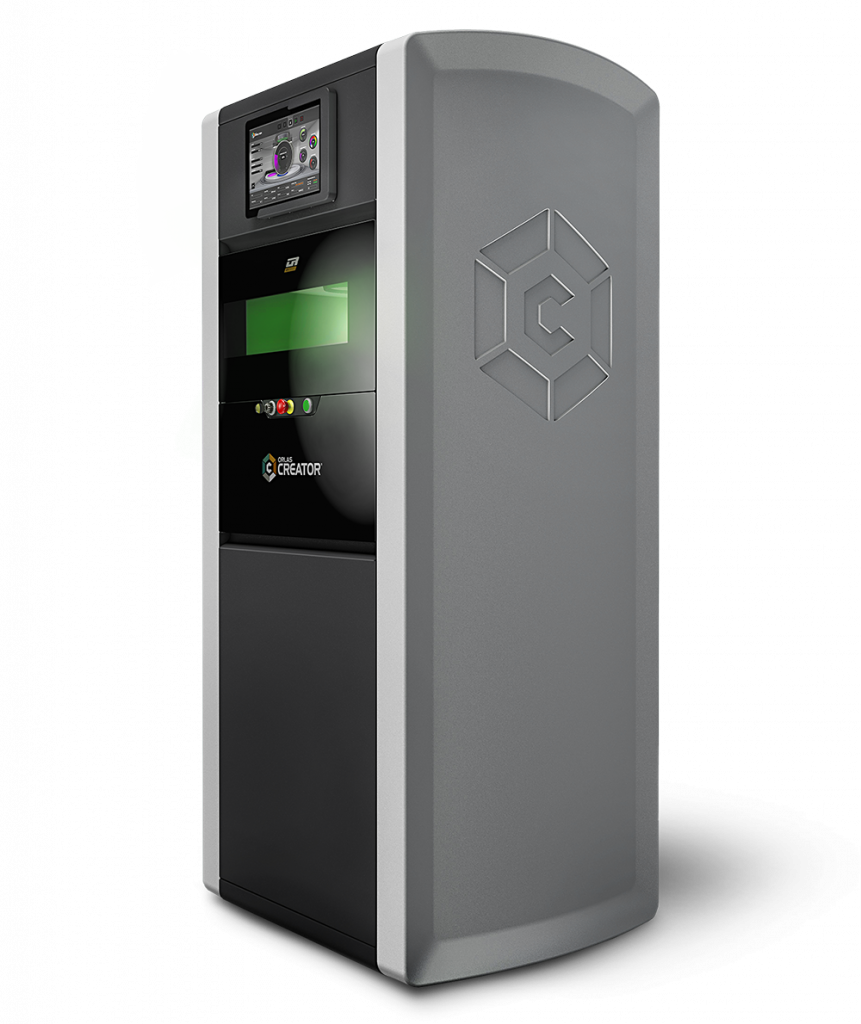Whereas FDM knowledge has been spread far and wide DLP and SLA learnings are often locked away behind closed doors. Only recently have we started to see many low-cost SLA machines start to appear worldwide. At the same time, open-source machines are now being launched. We expect to see a huge boom in SLA technologies in the near term. This will be very good news indeed to Korean firm Graphy. They are one of those little known bastions of SLA knowledge. The company develops and produces resins for 3D printing, another thing that is poorly understood.

What is Graphy? What kind of products do you produce?
It is a company that develops and manufactures 3D printer’s new materials, photopolymer resin. S Plastic is a versatile material that can be applied for various applications. We have also released ‘Tera Harz’ series, a highly functional material.
Why and when did you enter the 3D printing market?
Un Seob Sim, the CEO of Graphy started in 2D & 3D design as an engineer in 1994 and exchanged 3D printer material research and has technology with many chemical companies for 16 years since 2002. Also, he achieved the best performance in Asia as a person in charge of sales and technology for global 3D Printers, 3D CNC and 3D Scanners. He outlined his vision for the 3D printing materials along with his career.
What kind of products do you offer?
We offer photopolymer and curable resin for 3D printers with our own oligomer synthesis technology.
What differentiates your products?
In the past and until now, it has been challenging to develop materials, that can be applied for printing precise parts at high speed, cost effectively. Our materials exceed the expectations for their applications not only for prototypes but also final products required in engineering parts and in dental/medical devices. We’ve overcome the disadvantages of many 3D printer materials, which have been staying in the production of conventional concept prototype.

What is so special about Tera Harz?
Tera Harz overcomes the disadvantages of the 3D printer material that has been in the production of simple prototypes, and is the world’s first high-performance 3D printing material with high impact resistance, high strength and high compressive strength to produce engineering parts and functional dental parts.
What is so unique about your resins in general?
Our resin is a high-functional photo-curing new material that is synthesized with raw materials selected from the largest 3D printer related chemical company in Korea and is developed considering the demands of 3D printer users.
We are exporting our specialized photo curable new materials for 3D printers to global companies.
Why should I switch to your resins?
It is a safe material that passed cytotoxicity tests, Geno-toxicity and sensory test and it has much more functions and better mechanical properties than the injection plastic materials.
-Generic resins usually break down easily because of their low molecular weight. They are prone to thermal deformation and have limitations in their use as engineering plastics. It also contains VOC as it uses solvent, which has a negative effect on workers.
-Elongation is 40% approx. and the durometer hardness is 83~88(Shore D ASTM D2240)
This means that the parts printed with our material can perform better than thermoplastic and the final product can be directly fabricated on 3D printers without through injection molding.
For what printers can your material be used?
It is applicable for DLP and SLA and can be optimized for wavelength of the 3D printers.
Do you have medical and dental materials? Do you do custom materials?
Yes, we do have medical and dental materials as well as custom materials. if you provide your target mechanical properties, our R&D will develop the custom materials as per your demand.

Tell us about your Creator printer?
The high-end 3D metal printer CREATOR offers you all the advantages of additive manufacturing. Components and constructions in almost every geometric shape that cannot be manufactured using traditional manufacturing techniques can be created easily and quickly – without the need for additional tools.
Subscribe to Our Email Newsletter
Stay up-to-date on all the latest news from the 3D printing industry and receive information and offers from third party vendors.
You May Also Like
3D Printing Unpeeled: New Arkema Material for HP, Saddle and Macro MEMS
A new Arkema material for MJF is said to reduce costs per part by up to 25% and have an 85% reusability ratio. HP 3D HR PA 12 S has been...
3D Printing News Briefs, January 20, 2024: FDM, LPBF, Underwater 3D Printer, Racing, & More
We’re starting off with a process certification in today’s 3D Printing News Briefs, and then moving on to research about solute trapping, laser powder bed fusion, and then moving on...
3D Printing Webinar and Event Roundup: December 3, 2023
We’ve got plenty of events and webinars coming up for you this week! Quickparts is having a Manufacturing Roadshow, America Makes is holding a Member Town Hall, Stratafest makes two...
Formnext 2023 Day Three: Slam Dunk
I’m high—high on trade show. I’ve met numerous new faces and reconnected with old friends, creating an absolutely wonderful atmosphere. The excitement is palpable over several emerging developments. The high...































